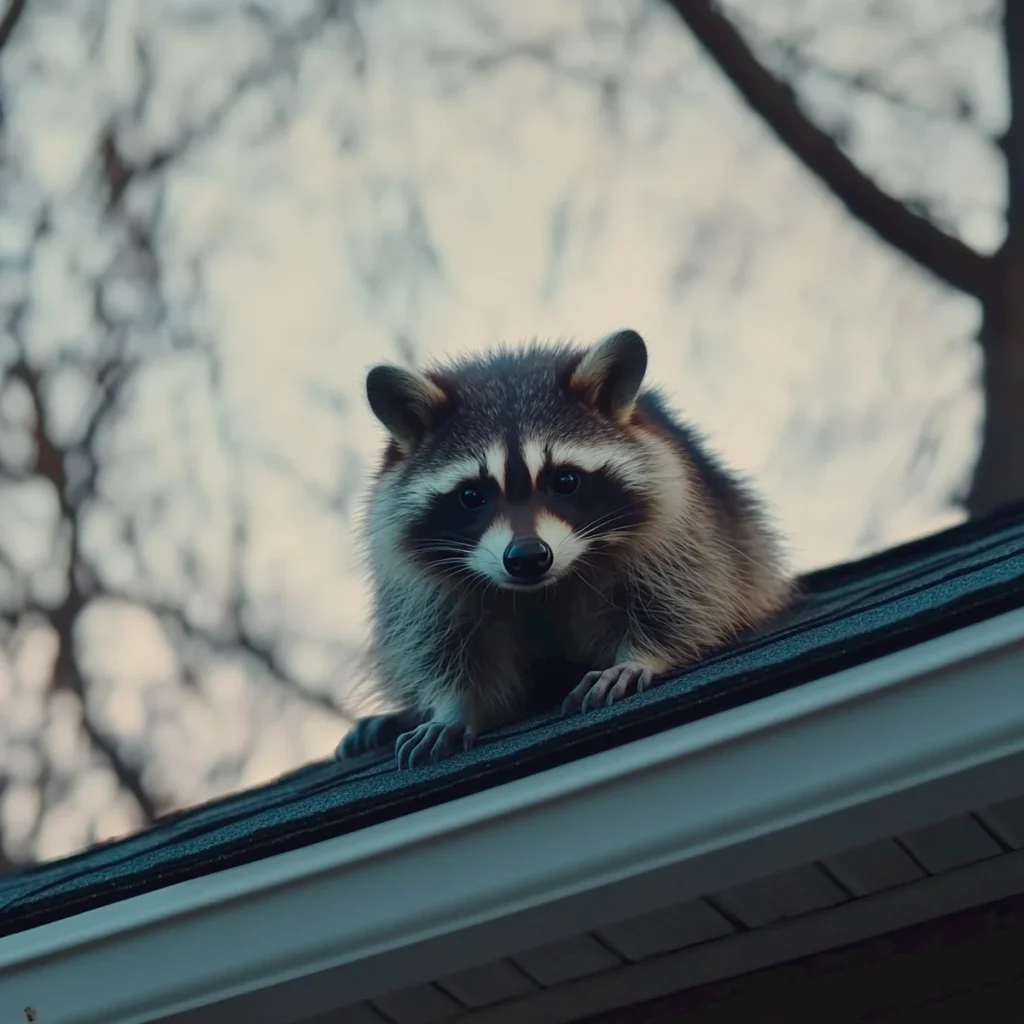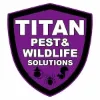Protect your home by spotting the warning signs early and taking action with Titan Pest & Wildlife Solutions’ removal services.
Whether you hear mysterious scratches at night or find puzzling evidence of uninvited guests, knowing what to look for is crucial. Here are the top 10 signs that wildlife may have chosen your home as their new habitat—and why swift action is essential for your safety and theirs. Contact us today by visiting our contact page or calling us at (314) 720-8857!

Our homes provide the perfect shelter many wild animals instinctively seek – warm, dark spaces protected from the elements. What might seem like an ordinary attic, crawl space, or wall cavity to us often proves equally appealing to squirrels, raccoons, birds, and other unexpected tenants.
While some wildlife visitors announce their presence with unmistakable signs, others are masters of discretion, leaving only subtle hints of their residence. Whether you’re hearing mysterious scratches at night or finding puzzling evidence of uninvited guests, knowing what to look for is crucial. Here are the top 10 signs that wildlife may have chosen your home as their new habitat – and why swift action is essential for your safety and theirs.
1. Unusual Noises in Your Home
Wildlife in your home often gives itself away with telltale noises, especially at night when animals are most active. Listen for sounds such as:
- Scratching or Scraping: This can indicate rodents, squirrels, or raccoons gnawing or burrowing.
- Pattering Footsteps: Often heard in the attic or walls, this is a common sign of squirrels or mice.
- Thumping or Bumping: Larger animals like raccoons or opossums may create louder thumping sounds, especially in attic spaces.
If you notice any of these sounds, try to identify where they’re coming from. This can help pinpoint which species is likely invading.
2. Droppings and Urine Stains
Animal droppings and urine stains are among the most definitive signs of a wildlife infestation. Different animals leave distinct droppings:
- Mouse and Rat Droppings: Small, rice-sized, and dark, typically found in kitchen cupboards or along baseboards.
- Bat Guano: Resembles small black grains and often piles up in attics or below roosting spots.
- Raccoon or Squirrel Droppings: Larger and often found near attic insulation or on roof corners.
Urine stains or strong ammonia-like smells may also be detectable. Animal droppings can pose health risks, so avoid handling them directly and consider professional cleanup if you spot them.
3. Entry Points in Roofs, Walls, or Foundations
Animals need entry points to access your home and are incredibly resourceful. Signs of potential entry points include:
- Holes or Chewed Openings: Look for chew marks on roof edges, soffits, vents, and around doors and windows.
- Loose or Displaced Shingles: Raccoons rip up shingles to create entry points, especially near attic spaces.
- Gaps or Cracks in Foundations: Small mammals like mice can squeeze through tiny openings, making basement-level inspection crucial.
Inspecting for these entry points can help you understand how animals are getting in and where to secure your home.
4. Unpleasant Odors
Wild animals often leave strong, musky odors that worsen over time. These smells can come from:
- Urine and Droppings: Many animals, especially rodents, mark territories, leading to a strong ammonia-like smell.
- Decaying Carcasses: If an animal dies in your walls, attic, or crawl space, it can create a very unpleasant odor that lingers until removed.
If you notice any strange, persistent odors in your home, it’s a good idea to investigate further, as it might indicate a wildlife presence.
5. Visible Tracks or Footprints
Tracks or footprints, especially near dusty or damp areas, can reveal an animal’s presence:
- Small Rodent Prints: Mice and rats leave tiny paw prints, typically with visible tail drag marks.
- Larger Prints in Attics or Garages: Raccoons, squirrels, and even opossums leave more substantial footprints, often accompanied by scattered dirt or debris.
Try dusting floors with talcum powder or flour to reveal tracks if you suspect an infestation but haven’t seen clear signs.
6. Damage to Insulation or Wiring
Animals nesting in attics often damage insulation and chew on wiring, which can lead to fire hazards and costly repairs:
- Shredded Insulation: Birds, squirrels, and rodents may tear apart insulation to create nests, especially in attics and crawl spaces.
- Chewed Wires: Rodents and squirrels love to gnaw on things, and electrical wiring is often a target, creating a potential fire hazard.
Inspect your insulation and electrical wiring regularly, especially when you’ve noticed other signs of wildlife.
7. Gnaw Marks on Wood, Plastic, and Other Materials
Many wildlife species, especially rodents and squirrels, have a natural tendency to chew. Look for:
- Teeth Marks on Wood and Plastic: Common around attic vents, window frames, or storage boxes.
- Gnawed Cabinet Corners or Pipes: Mice and rats often chew through cabinet corners or pipes to access food or water sources.
Regularly inspect these areas for chew marks, often one of the first signs of a rodent problem.
8. Nests in Attics, Basements, or Crawl Spaces
Animals often build nests once they establish a safe space in your home. Common nesting materials include:
- Shredded Paper or Fabric: Birds, mice, and squirrels use these to build nests in quiet, undisturbed areas.
- Piles of Leaves or Twigs: Squirrels, for instance, may gather natural debris to create makeshift nests in attics or eaves.
Finding such materials piled in hidden corners, especially in attics or basements, could be a sign that animals have set up residence.
9. Pet Behavior Changes
Pets often notice wildlife in the home before humans do, thanks to their heightened senses. Signs from your pets can include:
- Unusual Barking or Pawing: Dogs, in particular, may become fixated on certain areas, such as walls, floors, or ceilings if they detect movement or smells.
- Cats Staring or Chasing: Cats may spend excessive time near vents, windows, or attics if they sense or see small animals.
Watch your pets’ reactions closely if they show interest in unusual spots; it could indicate an infestation.
10. Visible Animal Sightings Indoors
Finally, seeing the animals in your home is the most obvious sign of a wildlife infestation. This includes:
- Rodents Scurrying Along Baseboards: Mice and rats are commonly seen at night.
- Bats Flying Indoors: Bats can occasionally enter living spaces, especially if roosted in attics.
- Birds or Squirrels in Vents: Birds nesting in vents may be visible outside, and squirrels might be spotted darting out of attic entry points.
If you notice wildlife in or around your home, act quickly to prevent the issue from worsening.
Why It’s Important to Address Wildlife Infestations Promptly
Ignoring the signs of a wildlife infestation can lead to severe issues, including structural damage, health risks, and increased repair costs. Animals such as rodents, raccoons, and bats can carry diseases like hantavirus, leptospirosis, and rabies, which can be transmitted to humans. Additionally, their presence can lead to increased allergens in the home, causing respiratory issues, especially those with allergies or asthma.
What to Do If You Suspect a Wildlife Infestation
If you notice any of these signs, it’s best to contact a professional wildlife removal service. At Titan Pest & Wildlife Solutions, we specialize in effective wildlife removal services, ensuring that animals are safely relocated and your home is thoroughly inspected for entry points or damage.
By staying vigilant and understanding these warning signs, you can protect your home from wildlife infestations and the potential problems they bring. Don’t wait until minor noises become a significant issue—if you suspect wildlife in your home, contact Titan Pest & Wildlife Solutions today to keep your property safe and pest-free.

